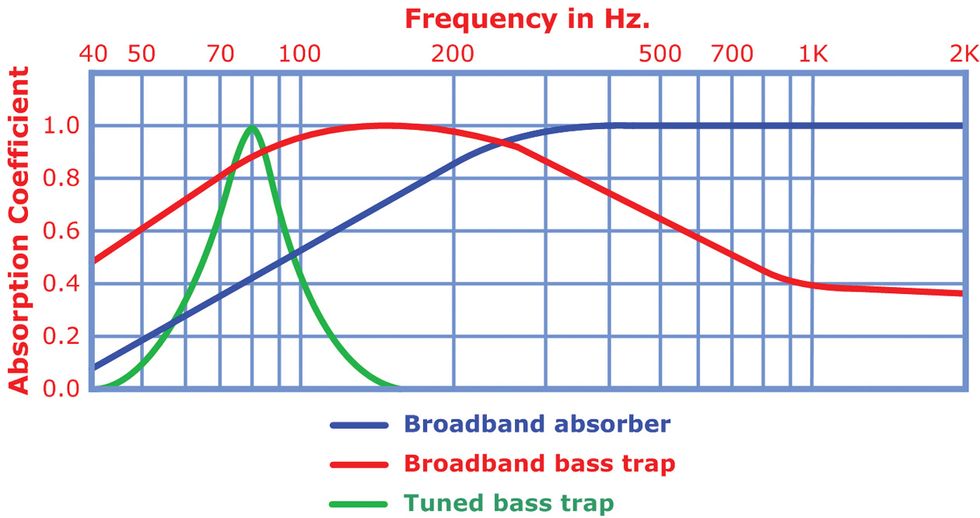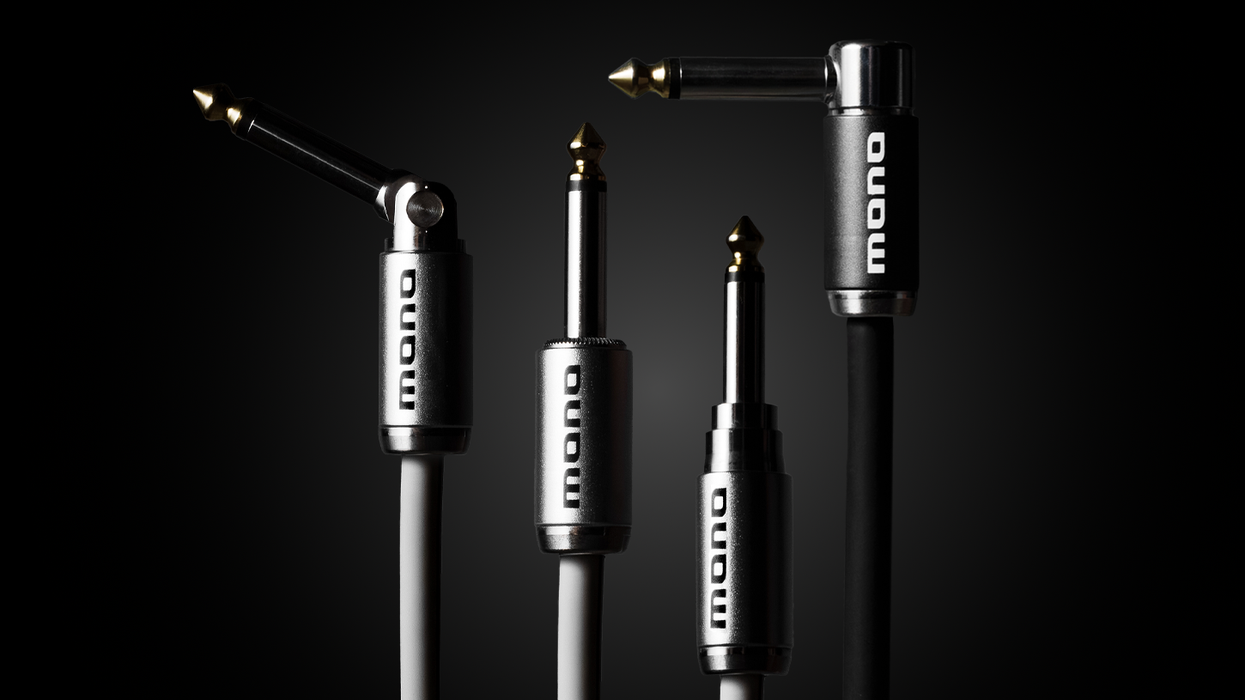Controlling a room's acoustic behavior is essential for anyone mixing music and—to a lesser extent—for any good rehearsal room. Studios have to invest heavily in all sorts of absorbing, dampening, diffusing, and trapping constructions. Investing in at least some of this for our rehearsal rooms can help avoid ear fatigue and assist in creating a relaxed and focused listening experience—well worth the money. There are several ways to improve room acoustics, but, as discussed in last month's part one of this series, paying attention to the bass frequencies is the starting point and what matters most.
Any room with rectangular walls exhibits standing waves (aka eigenmodes), resulting in an uneven response to what is played. There are usually three axial modes between walls, floor, and ceiling, and it's easy to calculate them. Here's an example: The speed of sound is 1,130 feet per second. Dividing that speed by twice the room size gives you the frequency of the lowest mode. So, walls at a distance of 10 feet apart exhibit their lowest mode at around 56 Hz. And now? Well, you've now got the mode for an ideal, empty room with 100 percent reflective walls and no doors or windows! You could build tuned absorbers for this specific frequency, but it's not clear whether the end result will work in real life.
Another increasingly popular method is to use software, which is available for almost any mobile device, to analyze a room's acoustic qualities. For most of us, it's information overload and can be especially misleading for a novice. When you start to take speaker placement into account, it gets even more complicated. Plus, you'll have to find correct places for the amps and cabinets after the gig, and let's not forget having to retune the absorbers once the new, big sofa enters the room. What most rehearsal rooms need are broadband absorbers, and instead of tuning them, use many. The absorbers for the low end are called “bass traps."
To see how well these steps can work when done right, take a look at Fig. 1. It's a 3-D waterfall plot where the red region shows the undamped room. There is a sharp, vertical exaggeration of a few frequencies with echos and reverb of up to almost a half-second. The blue region—which represents the addition of bass traps—not only exhibits a far more even response: It significantly decays echos, ringing, and reverb time.
Typical absorbers for the higher range are flat and wall-mounted, but the bass range needs more. An absorber consists of an open-cell material that dissipates the air particles' movements into heat. Yes, there are also systems that actively phase out a room's modal resonance or an even broader range of frequencies, but in our case, a passive absorber is the way to go.
An absorber's placement does depend on the specific room. Generally speaking, however, classic absorbers are placed at the center of the walls or as clouds on the ceiling filtering out mid or high reflections. But traps for the bass range are most often installed in a room's corners. Bass traps use similar open-cell foam, fiberglass, or mineral wool, but they differ in placement, thickness, and concept. (Typical bass traps use 2"- to 4"-thick absorbing material and a distance from the corners of 1.5 to 2 feet.) Fig. 2 shows the absorption coefficient at different frequencies of three different bass-trap constructions. For our purposes, the broadband version is the most effective in terms of tone and budget.
Fig. 2 — Here's the absorption coefficient of different absorber concepts and constructions.
So, why should bass traps be placed in the corner? Some say it's because corners bundle up the bass energy like a horn speaker, just reversed, as if the corners are the place where all the played notes meet. It's a nice picture to paint, but not quite the real reason. Once we have a standing wave, this means that our source signal is reflected from the wall and interferes with the next incoming wave front.
A standing wave has certain fixed characteristics at specific places in the room. The sound pressure directly at the wall is at a maximum, while at the same point the reflecting particle velocity is zero. (There is a wall!) Pressure has its next maximum in half a wavelength's distance from the wall, and its first minimum at a quarter of the wavelength, which is exactly where particle velocity has its first maximum. Pressure and velocity are always quarter-wavelengths (or 90 degrees out of phase). And the location of maximum particle velocity is where the absorber has to go.
The main point here is to leave a certain distance between the absorber and the reflecting wall. It doesn't hurt to fill these spaces, too, but it's a less effective use of material. And by placing bass traps in the corner, we'll not only get more depth and an absorption of lower frequencies, but varying gap size can give us a broader range of wavelengths.







![Rig Rundown: AFI [2025]](https://www.premierguitar.com/media-library/youtube.jpg?id=62064741&width=1245&height=700&quality=70&coordinates=0%2C0%2C0%2C0)












 Shop Scott's Rig
Shop Scott's Rig















































